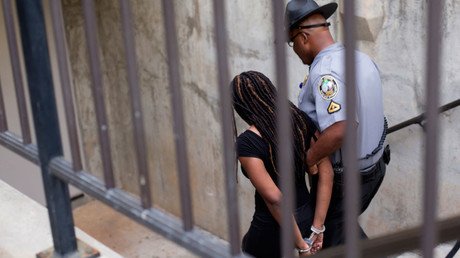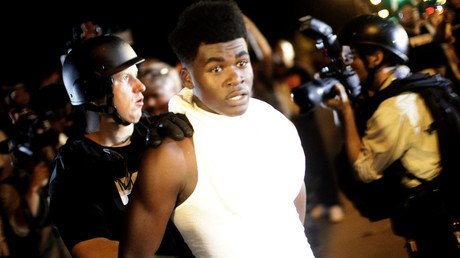Homicides account for 2/3rds of arrest-related deaths, US agency says
After years of federal estimates of police killings that observers have called incomplete, the Bureau of Justice Statistics says that about two-thirds of 1,900 deaths during arrests over a year period can be considered homicide.
From June 2015 through May 2016, approximately 1,900 people died amid encounters with US law enforcement officers, the Bureau of Justice Statistics (BJS) said in a new report, "Arrest-Related Deaths Program Redesign Study, 2015-2016: Preliminary Findings."
Just Released: Arrest-Related Deaths Program Redesign Study, 2015–16: Preliminary Findings https://t.co/mB7SHnjW9M#BJSstatspic.twitter.com/0tzI0Greeq
— BJS STATS (@BJSgov) December 15, 2016
Of those 1,900 deaths, about 1,200 of them could be considered homicides, in which people were intentionally killed by officers, according to an analysis of the report by FiveThirtyEight.com. The rest were deaths that resulted from accidents, natural causes, or, mostly, suicides during a police encounter, the BJS estimated.
Since Michael Brown's killing in Ferguson, Missouri, more than two years ago and the rise of Black Lives Matter, more attention has been paid to the fact that the FBI does not collect comprehensive data of instances of fatal police encounters. Rather, the Department of Justice has relied on data voluntarily offered by the more than 18,000 policing agencies across the US.
In response, activists and news media have picked up the slack. The Guardian and the Washington Post have begun tracking police killings in America, regardless of the circumstances of the deadly encounter. In 2015, 991 people were shot and killed by police, according to the Post, while the Guardian found that 1,146 people overall, beyond just shootings, were killed in 2015 by police. Killed By Police, Fatal Encounters, and Mapping Police Violence are other outlets for identifying officer-involved killings.
Previous federal government estimates of killings by law enforcement officers have resulted in predictions that were often about half of deaths counted by other sources. Last year, the BJS acknowledged that its methods for counting police killings were inadequate, leading to a more complete effort that resulted in the report released Thursday, about five weeks before a new presidential administration assumes control.
For its new report, the BJS said its researchers relied on media reports, as well as agency documents and surveys of law enforcement and medical examiner and coroner offices. A private research firm, RTI International, was hired to help verify the data.
After identifying around 1,700 police killings from June 2015 to May 2016, the BJS analyzed more closely the first three months of that year period, finding a 12 percent increase from its initial estimate. Applying that adjustment to the year total equaled out to about 1,900 deaths overall.
BJS report shows how wide a range of media coverage arrest-related deaths get. Suicides get much less than homicides https://t.co/0BqhIUFZt7pic.twitter.com/c1291IOLv6
— Carl Bialik (@CarlBialik) December 15, 2016
The heightened analysis of the first three months of the year period also found that 64 percent of the police killings from June through August 2015 were homicides, or intentional killings. Thus, proportionally applied to the entire year period, about 1,200 of the police killings the BJS counted could be considered intentional, report co-author Michael Planty, a deputy director of the BJS, told FiveThirtyEight.
The BJS did not count in the report deaths of people after arrest, a statistic that is kept separate. In 2014, the BJS estimated that 1,053 people died in local jails, while 3,927 died in state or federal prison.
The federal government estimates 1,200 people were killed by police between 6/1/15 and 5/31/16. We found 1,198. https://t.co/vqURbJHXRjhttps://t.co/5XYGYttQRt
— Samuel Sinyangwe (@samswey) December 15, 2016
The BJS report validates private efforts to fill gaps left by the federal government's previous data on US police killings, said Samuel Sinyangwe of Mapping Police Violence.
Accounting of police killings by the BJS "speaks to the power of some of what we’ve been collecting and what so many others have been collecting — that it’s really been able to approximate those numbers," Sinyangwe told FiveThirtyEight.















